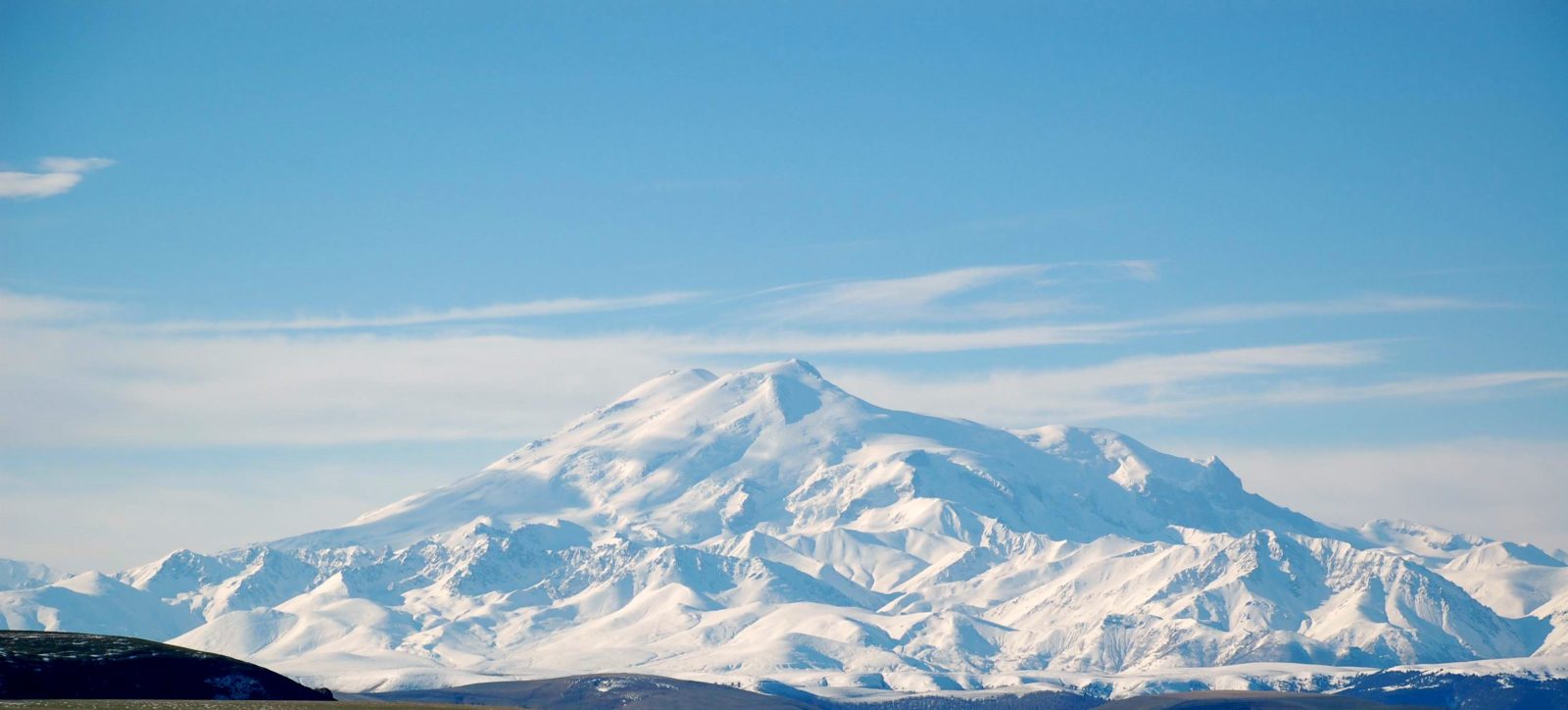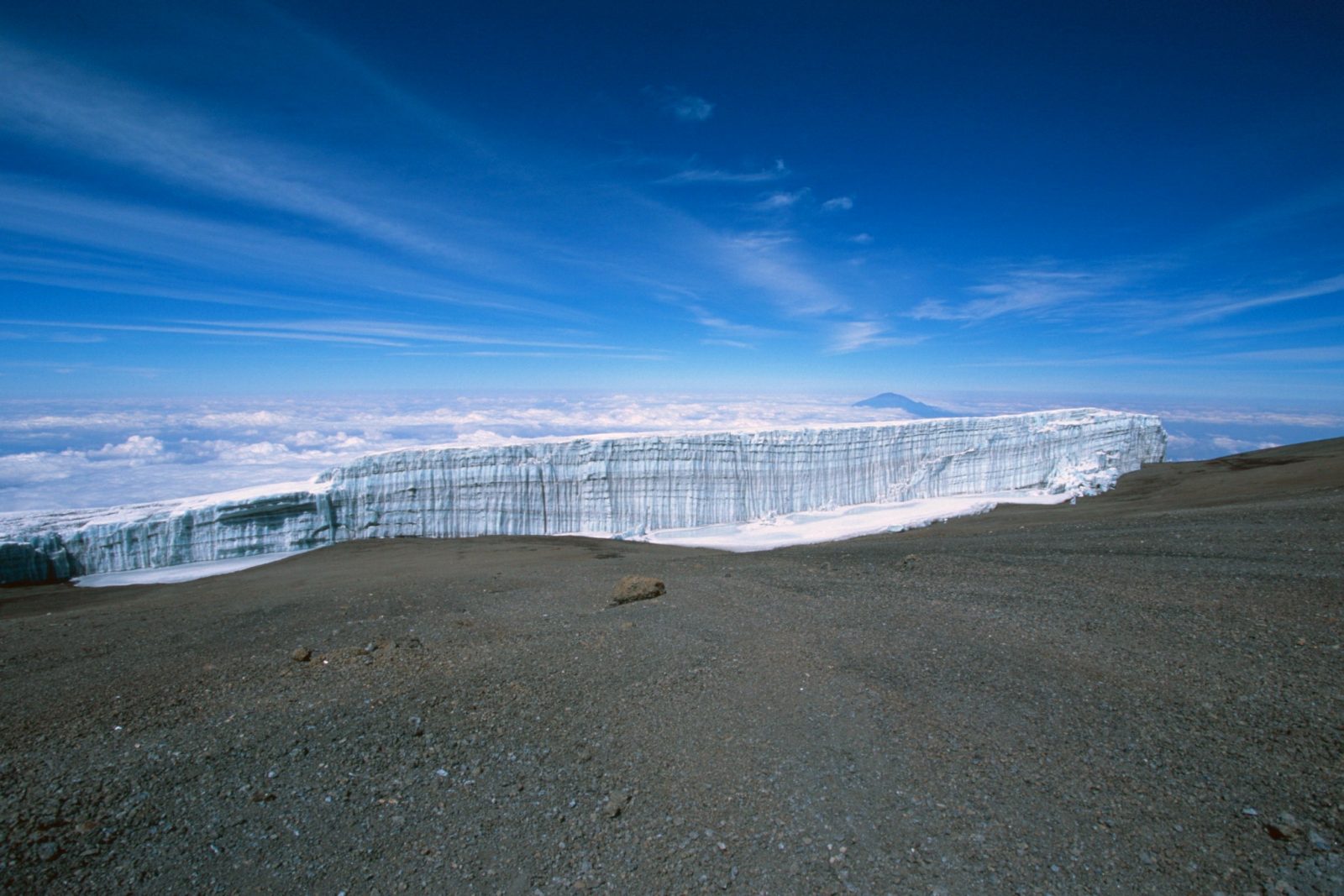
What’s The Highest Mountain in Europe?
Its summit is 18,510 feet (5642 meters) above sea level and it is located in Russia.
MOUNT ELBRUS IS THE HIGHEST MOUNTAIN IN EUROPE.
Its summit is 18,510 feet (5642 meters) above sea level and it is located in Russia. However the mountain itself – including the glaciers that run off it – are part of the European continental plate and that makes it one of the Seven Summits, the highest peak on each of the seven continents.
The definition of the seven summits has been contentious because of the definition of a continent. For the mountaineering challenge to climb the Seven Summits there have traditionally been two areas of dispute. One is whether the highest in Europe is Mount Elbrus or Mont Blanc, the second is whether the highest in Australasia is Mount Kosciusko in Australia or Puncak Jaya (Carstenz Pyramid) on Irian Jaya.

GEOLOGICAL DISPUTE OVER MOUNT ELBRUS
The argument over Elbrus is a geological one because the boundary between Asia and Europe could either be defined by the Kuma-Manych Depression or by the Greater Caucasus watershed. If it is the former then Elbrus and the whole Caucausus range lie inside Asia. However the latter is generally agreed to be correct and therefore Mount Elbrus is the highest on the European continent.
Mont Blanc meanwhile, long believed to be the highest in Europe until measurements were made after the Iron Curtain came down, is still seen by some to be the highest in Europe (the French?), but at 15,771 feet (4807 metres) it is better described as the highest in Western Europe or the highest in the European Union.
WHEN IS A MOUNTAIN NOT A MOUNTAIN?
Actually Mount Elbrus isn’t technically a mountain, it’s an inactive volcano which is a just a few kilometres separate to the main Caucasus range.
It’s prominence – which is the elevation between the peak and the lowest contour that completely encircles – is interesting too. Prominence is a measure of how distinct a mountain is from nearby peaks, so a peak with a high prominence tend to be the highest points around and they generally have amazing views. Mount Elbrus’ prominence is 15,554 feet (4741 metres) so it really stands out and it’s true, the views from the top are amazing! It’s actually the 10th most prominent mountain in the world.
WHO LIVES NEAR MOUNT ELBRUS?
It’s position is right on the border with Georgia and in a small republic called Kabardino- Balkaria. The Kabardanians live in the lowlands and are generally Christian, the Balkarians live in the mountains and are generally Muslim. They live peacefully and the few small villages which are at the base of the mountain on the south side – Terskol, Cheget and Azau – become thriving ski resorts in the winter. Some of the best heli-skiing in the world can be found in this area!
The local people are quite traditional and conservative in nature, they make a living from the mountain and they enjoy food and wine and dancing. The local gastronomic is lamb shashlyk, which are large skewers of lamb cooked over an apple wood fire.
THE NAME AND THE MYTHOLOGY OF THE HIGHEST MOUNTAIN IN EUROPE
Originally the Turkic people known as the Balkars who lived in the Caucasus called Mount Elbrus ‘Mingi Tau’ which means ‘resembling a thousand mountains’. It’s certainly a large mountain with over fifty glaciers extending from its two summits.
In ancient mythology the mountain plays a significant and painful role for Prometheus who was chained to it by Zeus as a punishment for stealing fire from the gods and giving it to mankind. Every day the eagles would peck out his heart but in the morning he would be restored, only to suffer the same again.
THE CLIMATE ON ELBRUS
The weather is most stable during July and August but you can climb from early June to early September if you have the right equipment. Cold and wind are continual problems to prepare for on Mount Elbrus, even in the height of the summer. Above the snow line temperatures can be minus 30 C and the wind can be very strong. A lot of problems are caused by storms rising during the day and groups caught out in bad visibility.
Because the mountain is situated between the Black Sea and the Caspian Sea, the effect of these two large bodies of water has a significant impact on weather, as does a particularly cold northerly which blows down from Siberia.

On the south side of the mountain there is a cable car system which was built from 1959 to 9176 and which reaches 12,500 feet (3658 metres). You can walk if you want to but the cable car takes you to the snowline in summer above which there are many huts for sleeping. The two most famous are the Barrels Huts at 3962 metres which are made from converted oil tankers and the Priut-11 hut at 4160 metres which was burnt down in a fire in 1998. In 2010 a rescue hut was built at 5500 metres in the col between the two summits.
A snow machine or ‘ratrack’ can carry climbers further up the mountain to about 4600 metres thereby reducing summit day considerably. The Normal Route on the south side Mount Elbrus is quite challenging due to a combination of snow and ice, high winds and low visibility and of course the high altitude. The north side of Mount Elbrus has less infrastructure and support, so the climb is more self-reliant and therefore more challenging.
Find out more about Safety on Elbrus, preparing for climbing Elbrus, and Health and Altitude before attempting one of these Seven Summits! Contact us for more information about joining one of our trips.
Related Articles

12 MONTHS, 12 MOUNTAINS
In celebration of World Mountain Day, we've created a calendar for the year to make it easy for you to plan your next mountain climb in the...

How can I Climb Kilimanjaro for Charity?
We often get asked, ‘how do I climb Mount Kilimanjaro for Charity?’ and the answer is easy, call us to have an initial talk about...

Huts on Mount Elbrus
Years ago when I was guiding clients with my Russian friend Sasha Lebedev to climb Mount Elbrus during the ‘perestroika’ period after...

Faking Mount Everest?
An interesting story has come about towards the end of this years season on Mount Everest concerning the claim from an Indian climber that his...

Kilimanjaro Diamox?
Regarding the use of Diamox on a Kilimanjaro climb, there is a tendency now for people to use it as a default drug in order to increase...

Weather and Seasons on Kilimanjaro
There is a magic about standing on the Roof of Africa. Mount Kilimanjaro, Africa's tallest mountain, stands 5895m above sea level. The climb...

Toilets on Kilimanjaro
So we all need a wee and a poo, but strangely it’s a topic that’s never really gets mentioned in day to day life. However on Kilimanjaro,...

Here are the Best Mountains to Climb Around the World
We implore anyone who has the physical ability to give mountain climbing a go. It’s one of the best feelings when you reach the top. As well as...

Top 5 Best Routes To Climb Mount Kenya
Mount Kenya is the second highest mountain in Africa with some incredible routes which can take you up and down in a variety of different ways yet...
